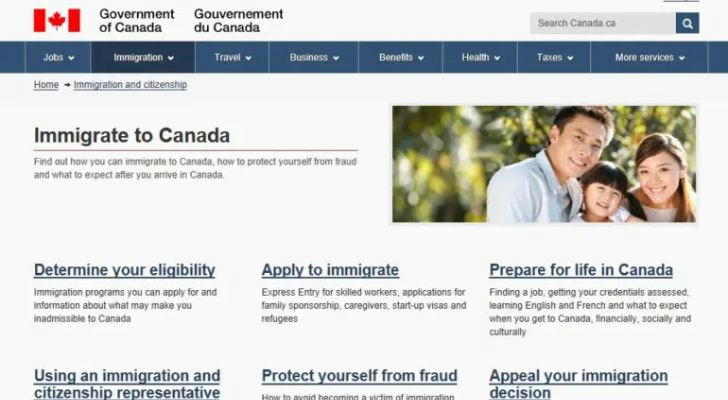Mastering English or French: A Complete Guide to Language Courses for Newcomers in Canada
🗝️ Language Proficiency = The Key to Success in Canada
📊 According to Statistics Canada, newcomers who reach CLB level 5 have a 63% higher employment rate than those at basic levels, and their median salary is 25% higher. Additionally, research by Immigration, Refugees and Citizenship Canada (IRCC) shows that 78% of immigrants who complete government-supported language training secure stable employment within three years. Whether you plan to settle in an English-speaking province or in Quebec, government-supported language programs (LINC/CLIC) offer structured training for both daily communication and career development.

✅ Why Choose Canada's Official Language Courses?
- 🎓 Immigration-Friendly: CLB/NCLC certificates are recognized by provincial immigration programs, and some provinces accept LINC level 5 as an IELTS alternative.
- 💼 Career-Boosting: Over 40% of courses include employer partnership modules, allowing students to secure jobs during their training.
- 🌍 Cultural Integration: Learn essential healthcare, legal, and daily life vocabulary for smooth integration into Canadian society.
- 📅 Flexible Learning: Courses are available in online/in-person, full-time/part-time formats to suit different schedules.
📚 Core Program Comparison
| Program | 🏙️ LINC (English) | 🇨🇦 CLIC (French) |
|---|---|---|
| Target Audience | Newcomers settling in English-speaking provinces | Those settling in Quebec or French-speaking communities |
| Core Content | Workplace communication, citizenship test preparation | Quebec culture, legal and administrative French |
| Special Modules | Canadian job interview simulations | Housing and education system guide in French regions |
🎯 Course Structure by Age Group
👦👧 1. Youth Courses (Ages 12-17)
- 🎒 Academic Support: Strengthening subject knowledge (Math/Science terminology).
- 🎭 Scenario-Based Learning: School social simulation (group projects/club applications).
- 📚 Education Pathway: Achieving CLB 4 can exempt students from international student language tests.
🏢 2. Adult Courses (Ages 18-35)
- 💼 Career-Oriented Modules: Industry-specific vocabulary (IT/healthcare/trades).
- 📈 Express Entry (EE) Preparation: CLB 7 writing training to improve immigration scores.
- 🌐 Hybrid Learning: In-person classes + English Online Manitoba platform.
🔹 Success Story: 👨💻 Wang, a Chinese immigrant, arrived in Canada with only CLB 3 English proficiency. He enrolled in a LINC program and improved to CLB 6 in eight months. During his Co-op placement, he received a job offer from an IT company. Today, he is a full-time software engineer.
👨👩👧👦 3. Mid-Career Courses (Ages 36-55)
- 👨👩👧 Family Life English: Parent-teacher meetings, child benefit applications.
- 🕒 Flexible Scheduling: Weekend and lunchtime crash courses for working professionals.
- 🏥 Practical Scenarios: Medical appointments, emergency response training.
👴👵 4. Senior Courses (Ages 55+)
- 🐢 Slower Teaching Pace: Extended class time (2.5 hours per session).
- 🔍 Senior-Friendly Materials: Large-font textbooks and high-contrast presentations.
- 🏘️ Community Topics: Senior housing applications, public transit discounts.

🎁 Additional Course Benefits
🎯 Immigration Acceleration:
- 🇨🇦 Manitoba's MPNP program accepts LINC level 5 as an alternative to IELTS General.
- 🇨🇦 Quebec's PEQ program recognizes CLIC language test results.
💼 Employment Support:
- 🏙️ Some institutions in Toronto offer “Language + Co-op” programs to boost job readiness.
- 🇨🇦 French programs in Montreal include local business visits to enhance career planning.
🏙️ Regional Course Options
📍 Vancouver:
- 🏨 Specialized “Service Industry English” courses (hotel/retail sectors).
- 🌙 Evening live-stream classes in Pacific Time (ideal for part-time learners).
📍 Toronto:
- 💰 Business English for the Financial District.
- 👩💼 Newcomer Women's Learning Group, providing professional skills training.
📍 Montreal:
- 💻 Intensive French for Tech Professionals.
- 🏛️ “French + Quebec History” Cultural Integration Course.
📝 Four-Step Registration Process
1️⃣ Self-Assessment: Complete the CLB Online Assessment. 2️⃣ Official Testing: Schedule an in-person assessment with an ICARE-certified institution. 3️⃣ Course Matching: Choose a program based on location and career goals. 4️⃣ Enrollment Preparation: Receive study materials and attend the orientation session.
❓ Frequently Asked Questions
❓ Q: Can non-permanent residents enroll? ✅ Work permit/study permit holders are eligible; those on tourist visas must opt for private institutions.
❓ Q: Will enrolling in these courses affect my government benefits? ✅ Part-time study does not impact child benefits or other financial support programs.
❓ Q: How can I transition from language training to higher education? ✅ Consider institutions like Algonquin College, which offer a structured “LINC → EAP → Professional Course” pathway.
🚀 Take Action Now
🔹 Visit the Canada Immigration website: Canada Immigration 🔹 Contact a local Settlement Agency: Get the latest course listings and class schedules. 🔹 Join a Newcomer Learning Community: Connect with other students and share learning experiences. method
🌟 Every day you improve your language skills, you're investing in your future in Canada!

